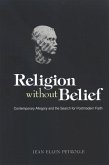Please note that the content of this book primarily consists of articles available from Wikipedia or other free sources online. By the 16th century allegory was firmly linked to what is known as the Elizabethan world picture, taken from Ptolemy and Pseudo-Dionysius the Areopagite. This theory postulates the existence of three worlds: The sublunary world we live in, subject to change. The celestial world, the world of the planets and stars, unchanging. The supercelestial world, where angels and the Godhead are. Pico della Mirandola discusses the interrelations between these three worlds in the introduction to his Heptaplus: ''For euen as the...three worlds being girt and buckled with the bands of concord doe by reciprocall libertie, interchange their natures; the like do they also by their appellations. And this is the principle from whence springeth & groweth the discipline of allegoricall sense'' (translated by Pierre de la Primaudaye in The French Academie, London, 1618, p. 671)








